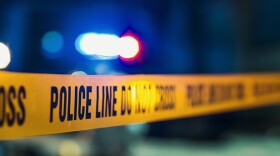World War II is the deadliest war in human history with more than 85 million casualties. By 1945, the world was in ruins from London to Hiroshima.
While we hear of battles and heroics by combatant soldiers, there’s another group of servicemen that don’t get as much attention: the people photographing what happened.

America’s soldier photographers used cameras instead of guns, and their work is the subject of a new book called Aftershock: The Human Toll of War. The book is co-authored by Richard Cahan, Mark Jacob and Michael Williams.
Aftershock looks closely at 1945 and highlights a record of pictures housed at the National Archives — both stunning and brutal.
Cahan says, “1945 was a really important year in human history. It was one of the most violent, it was obviously the year of the atomic bombs and the emptying of concentration camps and we really wanted to focus on the effect of war."

The book also contains in-depth research about both the subjects and photographers behind all of the photos found in the National Archives.
“We really went through the photographs trying to touch on all the important issues of 1945 from the Yalta Conference to concentration camps to the atomic bombs,” says Jacob. “It’s not so much a book about battles, it’s really a book about the aftereffects of battles.”
Richard Cahan will be at Concordia University on Tuesday for a book signing and talk about Aftershock.







